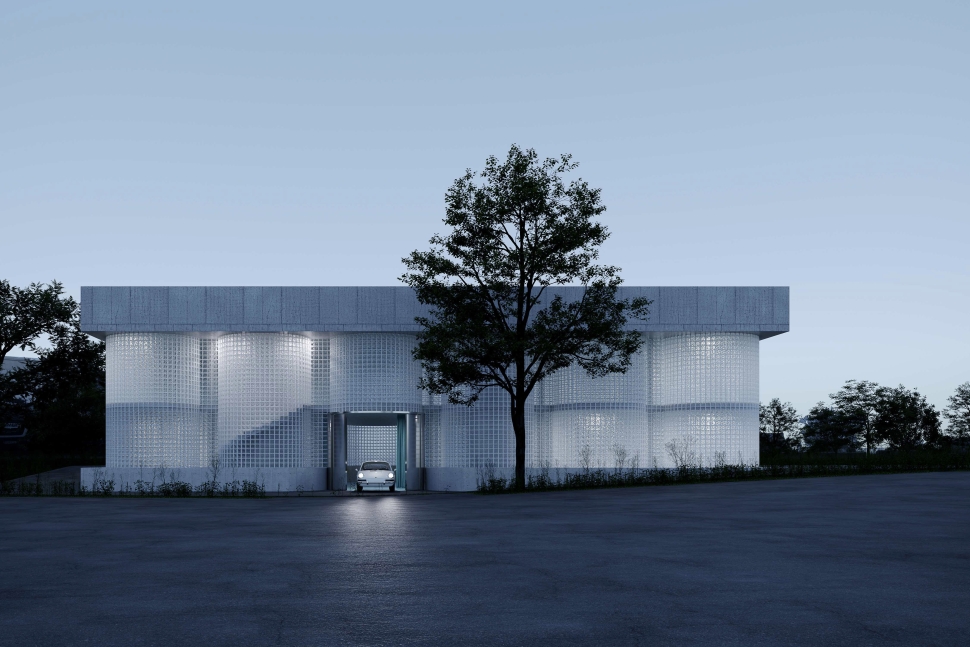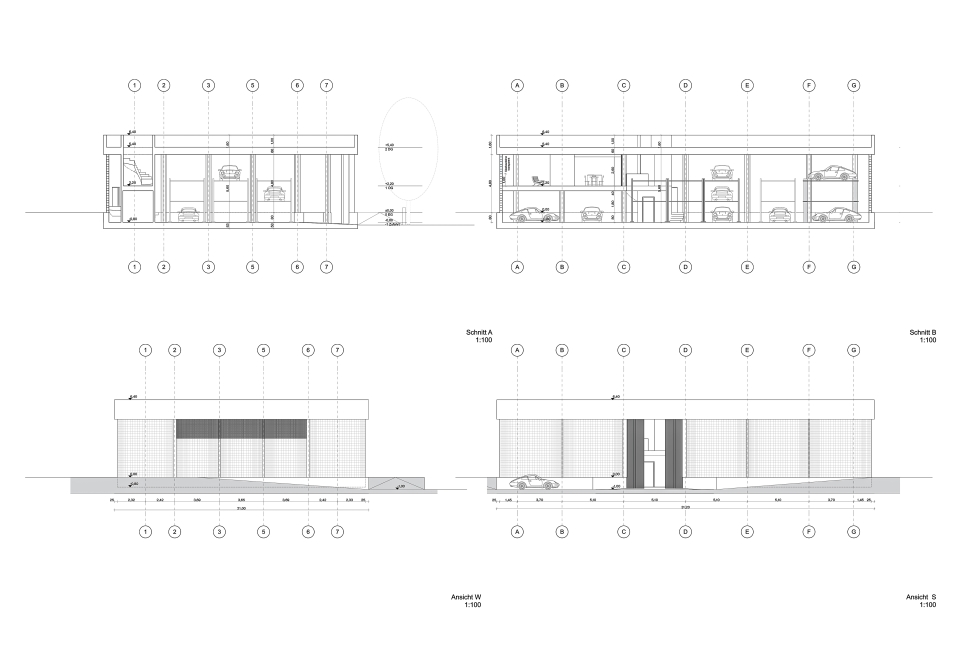This private museum near Vienna houses a collection of sportscars passionately assembled over decades. Each car is placed within a semicircular, light-filled bay, or center stage, celebrating the owner’s fondness for every vehicle.


Workshops and warehouses around the site provided the inspiration for an architecture that seems to honor the dignity of industry, and a local brick tradition motivated the use of glass-blocks throughout the facade. They fill the interior with monumental light, and make the building glow at night.
That which is concave inside, becomes convex outside. And so viewed from the street, six or five fattened columns of glass-blocks, sitting on a solid base, calmly carry the weight of the concrete roof whose square patterning reminds of temple entablatures.


The result is a distinctly classical facade – a Doric tempering of one’s own power.
The concrete columns in the gallery taper towards the middle and then grow outwards again, signaling the 2-story partition of the building, and toying with an inverted version of entasis.


But the rich curtain that needs to be opened to let vehicles inside affords the interior with a counterpoint of the sensuous, and a reminder of the mutable.
A small apartment on the mezzanine level allows the collector to sleep amidst his cars. His bed is snugged into one of the glass-block lobes just like the cars below, declaring that whatever is good for the automobile is good for the human. Turned inwards towards the gallery, the living area becomes a viewing platform from where to admire, commend and command. And select. And drive away.

